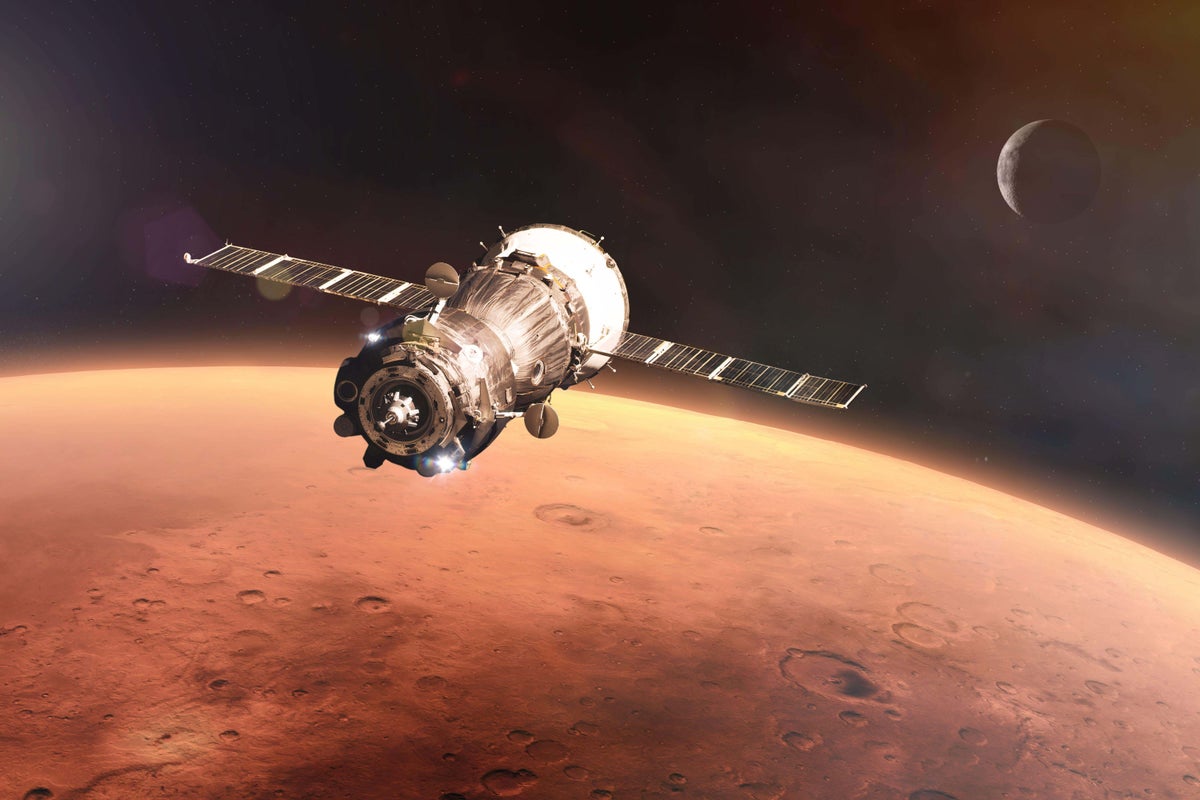Science
NASA Unveils Potential Signs of Ancient Life on Mars

NASA recently announced significant findings from Mars that may hint at the planet’s potential for past life. Scientists have identified unique patterns of minerals in clay-rich rocks located at the edge of Jezero Crater, a site that once functioned as a lake fed by ancient Martian river systems. The area is currently being explored by NASA’s Perseverance Rover. These intriguing “leopard spot” patterns resemble microbial traces found on Earth, raising questions about whether they could indicate past microbial life on Mars.
While the evidence remains inconclusive, the discovery has reignited the debate regarding the possibility of life on Mars, both in the past and potentially even today. Researchers stress that multiple lines of evidence will be necessary to confirm any assertions about life on the planet. There are analogues on Earth that suggest certain Martian environments could be habitable, particularly those that were akin to early Earth, which supported life in its infancy.
Martian Conditions and the Quest for Life
Both early Earth and early Mars shared characteristics, including atmospheres and magnetic fields that protected against harmful solar radiation. During this period, liquid water was present on both planets. It is known that these conditions contributed to the emergence of life on Earth, leading scientists to consider the possibility that similar processes could have occurred on Mars.
As Earth’s life began to flourish, Mars underwent significant changes. The planet lost its magnetic field as its core cooled, exposing it to solar radiation that gradually eroded its atmosphere. This made the surface inhospitable, transforming it into the cold and arid desert seen today. Consequently, many experts do not expect to find active organisms on the Martian surface; rather, they believe that any surviving life forms would be located in protected regions underground or within icy environments.
Potential habitats for microbial life may include caves, beneath polar ice sheets, or in deep subsurface layers. These locations have analogues on Earth that support thriving microbial ecosystems, making it plausible that if life ever existed on Mars, it could still persist in these extreme niches. The Martian subsurface, which extends from a few metres to several kilometres deep, is considered the most viable and stable environment for life.
Exploring Mars: Past and Present
On Earth, a substantial amount of microbial life exists beneath the surface, often residing in cracks within rocks. These ecosystems commonly consist of lithoautotrophs, microorganisms that derive energy from minerals. Interestingly, methane—a potential byproduct of some lithoautotroph activities—has been detected on Mars. However, the presence of methane does not definitively indicate life, as there are non-biological processes that can also produce it.
The existence of a deep biosphere on Mars depends on several factors, including the availability of liquid water, energy sources, and suitable temperatures. Evidence suggesting the presence of liquid water beneath the Martian surface is still debated. If liquid water exists, it could facilitate chemical reactions that provide energy for microbial life.
Mars’s unique geology may also play a role in its potential to host organisms. Due to weaker gravity, rocks on Mars may be less compressed than on Earth, allowing for greater porosity and space for life to exist at depth. Additionally, Mars generates less heat from its interior, potentially allowing for suitable temperatures for life at greater depths compared to Earth.
Scientists are actively studying extreme environments on Earth—often referred to as Mars analogues—to understand how life might survive on Mars. Examples of these environments include the Atacama Desert in South America, sediments at Lake Salda in Turkey, and salts found in Pilot Valley in Utah. These research efforts aim to shed light on how Martian conditions might impact life and its preservation.
In addition to field studies, scientists conduct controlled laboratory experiments using specialized “Mars chambers” to replicate Martian environmental conditions, including its atmosphere and radiation levels. Such investigations are crucial for enhancing our understanding of the potential for life on Mars.
As of now, there is no definitive evidence of past or present life on the Red Planet. NASA’s “leopard spots” constitute the most promising indicators yet discovered, but they remain unverified. Should life exist on Mars today, it is unlikely to be widespread, as NASA’s rovers and probes have not detected any signs of it.
Looking ahead, opportunities for discovery are on the horizon. The upcoming European Space Agency (ESA) Rosalind Franklin rover is set to drill up to two metres below the Martian surface. This mission may provide insights into the shallow subsurface, where living microorganisms could be found. However, scientists agree that further exploration will require deeper drilling efforts, which pose significant scientific and engineering challenges.
Uncovering the secrets of the Martian deep subsurface may ultimately lead to breakthroughs in our understanding of life beyond Earth. The quest continues, and the findings from Jezero Crater serve as a tantalizing starting point in this ongoing exploration.
-

 Health3 months ago
Health3 months agoNeurologist Warns Excessive Use of Supplements Can Harm Brain
-

 Health3 months ago
Health3 months agoFiona Phillips’ Husband Shares Heartfelt Update on Her Alzheimer’s Journey
-

 Science2 months ago
Science2 months agoBrian Cox Addresses Claims of Alien Probe in 3I/ATLAS Discovery
-

 Science2 months ago
Science2 months agoNASA Investigates Unusual Comet 3I/ATLAS; New Findings Emerge
-

 Science1 month ago
Science1 month agoScientists Examine 3I/ATLAS: Alien Artifact or Cosmic Oddity?
-

 Entertainment5 months ago
Entertainment5 months agoKerry Katona Discusses Future Baby Plans and Brian McFadden’s Wedding
-

 Science1 month ago
Science1 month agoNASA Investigates Speedy Object 3I/ATLAS, Sparking Speculation
-

 Entertainment4 months ago
Entertainment4 months agoEmmerdale Faces Tension as Dylan and April’s Lives Hang in the Balance
-

 World3 months ago
World3 months agoCole Palmer’s Cryptic Message to Kobbie Mainoo Following Loan Talks
-

 Science1 month ago
Science1 month agoNASA Scientists Explore Origins of 3I/ATLAS, a Fast-Moving Visitor
-

 Entertainment2 months ago
Entertainment2 months agoLewis Cope Addresses Accusations of Dance Training Advantage
-

 Entertainment3 months ago
Entertainment3 months agoMajor Cast Changes at Coronation Street: Exits and Returns in 2025









